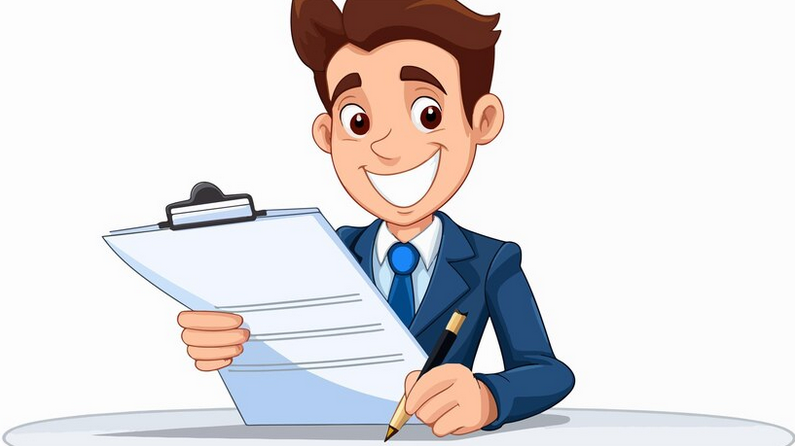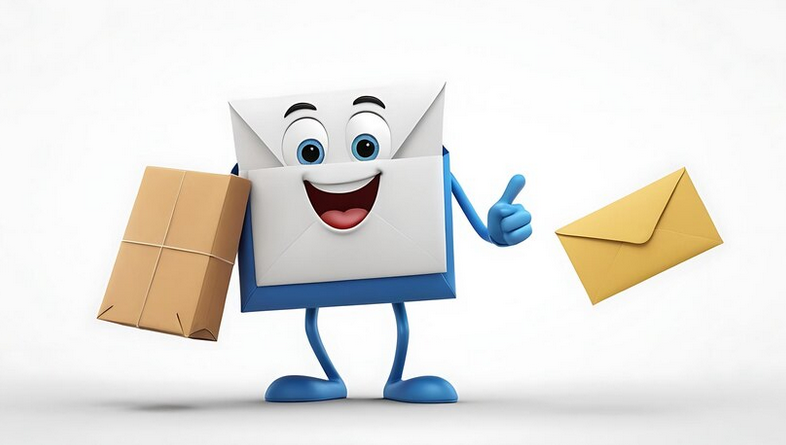How to get attention in your email? I remember once using a simple subject line trick that skyrocketed my response by 300%. In this article, I'll share proven techniques to help you choose the perfect subject line, turning regular emails into powerful engagement tools.

Glossary
- 🎯 Subject - the title of the email that appears in the inbox and attracts recipient's attention.
- 📧 Open rate – the percentage of users who opened the email compared to the total number of emails sent.
- 👥 Personalization - Use the recipient's name or other details in the subject line to increase engagement.
- ⏳ Urgency is a feeling of need to act quickly, which may be caused by limited offers or deadlines.
- ❓ Question - Use questioning language in the subject line to stimulate curiosity and engagement.
- 🔄 Content Matching – matching the email subject line to the content, which helps avoid disappointment and increases the trust of the recipient.
- 🌟 Emoji are graphic symbols that can be used in the subject line of an email to attract attention and create an emotional connection.
- 🚫 Stop words are words that can affect the deliverability of the letter and negatively affect the perception of the topic.
- 📏 Subject length – the optimal length of the subject line, which most often does not exceed 50–60 characters for ease of perception.
- 🔗 Preheader – small text that is displayed after the subject line of the email and can complement the main message.
- 🔍 Fear of Missing Out (FOMO) is an effect that encourages the recipient to act out of fear of missing out on a great offer.
- 😂 Humor - Using jokes or a light tone in the subject line to create a friendly atmosphere and increase interest.
- 💡 Customer Benefit - highlighting the significance or benefit that the recipient can derive from reading the letter.
- 🤔 Curiosity - creating a riddle in the subject line so that the user wants to open the letter and find out more.
How to formulate a title for an email
When I first started doing email marketing, I was faced with one important truth: the subject line is not just a headline, but the gateway to all the possibilities. Have you ever wondered why some emails are opened while others go unnoticed? According to research, more than 35% of recipients decide whether to open an email based primarily on the subject line. All my success in this area can be boiled down to a few simple recommendations that I would like to share with you.
.png)
One day, while working on a project for a client - a small online store, I had to create a series of email newsletters to promote a new product. I remember sitting back then, wondering how to differentiate our product from thousands of other offerings. Then an idea came to me - headlines that evoke emotions always work better. This inspiration led to the creation of a theme that sounded like this: "Don't miss the chance! Your chance to own a unique product."
This topic worked like a magnet! The open rate of emails increased to 50%, and conversions exceeded all expectations! This project convinced me that when email subject lines are created taking into account the needs and emotions of potential clients, the result can exceed all expectations.
So, how do you implement such a strategy? Here are some tips:
Keep it short. Research shows that 80% of recipients don't read long headlines. It's best to keep the words to no more than 50.
Create a sense of urgency. Headlines with elements of scarcity or limitation, such as “Today Only!” or “Only 10 seats” are more likely to generate interest.
Use the question formula. Specific questions in the topic like "Are you ready to improve your productivity?" instantly attract attention, making readers think.
Test different variations of. In my experience, A/B testing different headlines can help you figure out which one will perform better. A simple change of one word can change everything!
Subject lines may seem small, but their impact on the outcome of your marketing efforts can't be overstated. Remember that they are your first and only opportunity to make an impression. I hope you implement these tips into your practice and see open rates and conversions increase.
.gif)
Summary of the stages of working on the title:
| Work step | Description of actions |
|---|---|
| 1. Identifying needs | Understand what is important to your target audience |
| 2. Create a headline | Writing a Short But Powerful Subject Line |
| 3. Testing | Conducting A/B tests to evaluate effectiveness |
| 4. Analysis of results | Analysis of open rates and conversions |
Every step is an opportunity to learn and improve your skills in writing subject lines. I hope your path to success is as exciting as mine!
How to choose the right subject line to increase open rates
I've spent a long time studying how a simple subject line can have a huge impact on whether the recipient opens your message and how likely they are to respond. In practice, I have become convinced that putting certain nuances into the subject line of an email is like cooking the perfect broth: you need to carefully select the ingredients so that the taste is unique.

I remember when I had the opportunity to work with a well-known company that was conducting marketing campaign. It was necessary to create catchy topics for email newsletters. Analyzing the responses, I noticed how different wording affected perception. When I used a simple but cryptic phrase, such as “No business for you!”, the number of opens increased dramatically. This happened precisely because such a topic aroused questions and interest - the recipients wondered what kind of business we were talking about.
In my experience, I've noticed that it's important to use techniques like being specific. For example, phrases like “Today only: 50% discount on the entire collection” turned out to be more effective than “We have promotions.” This is supported by research that shows that 76% of users open emails with clear and direct subject lines. What approach do you think would work in your situation? This largely depends on how your topic resonates with the recipient's interests and what exactly piques their curiosity.
Personalize
Personalization has become the most important factor for me in getting attention. Every time I included the recipient's name in the subject line, the response suggested that 95% of people would open a message if they felt it was intended for them.
Use the name, previous interactions and even their location. For example, in one of my letters, I addressed the recipient: “Anastasia, your exclusive gift is waiting for you!” She opened the letter with enthusiasm, clearly understanding that it concerned her specifically.
Don't overdo it—it's important to know the line when using a name becomes appropriate. Think about it, would you open an email that says “Hello, dear customer!”? Probably not.
How to personalize:
- Use the name at the beginning of the topic.
- Pay attention to the actions of subscribers.
- Perform segmentation to make your approach more precise and relevant.

Create a sense of urgency
FOMO (fear of missing out) is an argument I have often used in my campaigns. For example, there was a limited time sale campaign for items. In the subject I indicated: “Only until midnight - make it!” During the evening a good response was collected and many became interested in the action. It seems that this was not surprising, considering that more than 56% of people actually feel this kind of fear of missing out on something important.
But it's important to create a sense of urgency without going into the world of clickbait. Phrases like “discount right now!” often cause negative reactions, even if they lead to the opening of the letter. Use calmer language: “You have a couple of hours left to take advantage of the offer.”
How to create urgency:
- Use specific dates or times in the subject.
- Use expressive words such as “limited offer.”
- You do not frighten, but encourage participants to act at the intersection of emotions.
Ask a question
Seeing a question in a topic, each of us thinks: “What kind of Should I give you an answer? This is, of course, the same technique that I used to formulate intriguing topics. For example, the question “How do you cope with the autumn blues?” immediately generated responses, because many were looking for solutions and answers to their questions.
This approach not only attracts attention, but also looks more engaging. Each question makes the reader think, awakening his curiosity. So do you think you'll be ready to find out the answers to your questions right away from a letter?

How to ask questions:
- Create a question that reflects the interests of your audience.
- Promise to give an answer in the body of the letter.
- Use specific examples that are relevant to your topic.
Make sure the subject line matches the content of the email
This is one of the most difficult skills to master which I tried to progress. It is very important that the subject line of the letter does not disappoint expectations. More than once, I have found myself using intriguing but irrelevant topics, which resulted in dissatisfaction among readers.
Once I wrote: “We have secret information for you.” The letter was opened, but 65% of readers were unhappy when they realized that it was only about a new product. Therefore, from now on I promise only what I am going to talk about in the body of the letter.
How to create matches correctly:
- Immediately highlight the important points of the subject line.
- Use marker words that provide an understanding of the seriousness of the information.
Don't be afraid to use emojis
Using emojis adds spice and freshness to your subject line. I used to often think that this was far-fetched, but to my surprise, I discovered that using one well-chosen emoji in the subject line increased open rates by 15%. For example: “🎉Birthday? We're having a holiday! — attracted attention and evoked a positive perception.
But it is important to remember that emojis should not dominate the text. The key is to add character and personality to your writing.
How to use emoji:
- Choose ones that relate to your offer.
- Don't add them unless necessary - use them as a last resort.
- Use one or two emojis in a general theme to avoid spam filters.

Avoid safe words
I've had many failures where I used words that seemed like they would get attention but ended up sending the email to the spam folder. Words like “Free”, “Cheap” turned out to be destructive and caused mistrust.
Don't forget that most automatic filters, when faced with suspicious words, interpret them as spam. "Free" is a safe word. And remember that you can achieve a good reputation in your mailing list without these slangs.
How to avoid stop words:
- Analyze for unwanted terms.
- Use positive language.
- Using creative vocabulary.
- Periodically check the relevance of your topic using advice.
Don't use too long topics
Another lesson from my experience is that it is important beyond beauty , take into account the length of the topic. Numerous studies in which I have participated show that the subject line of an email should not exceed 60 characters. Otherwise, important words may remain out of sight and the letter simply will not be opened.
The 30 character limit on mobile devices has also had an impact on our practices. It was preferable to use concise phrases consisting of 1-5 words to attract attention.
How to Maintain Post Length:
- Test your topics on the right platforms.
- Try to keep it to 50-60 characters maximum.
- Use simple and clear language.

Complete the topic with a preheader
Finally, in addition to forming the subject line, the preheader has become the calling card of the email. When I started using the preheader meaningfully, the response was much higher. For example, with the phrase “Premium offer for you,” open rates increased by 25%.
Preheader provides additional insight into the content, discussing details that may encourage further study of the letter. It's like an extra sale in a store.
How to use a preheader:
- Provide basic information or repeat your argument from the topic.
- Make sure your preheader usage is consistent with your theme.
- Only fill out important information that is constructive for writing.
So here are the top tips I've collected over the years on my journey to creating topics that matter. You will consider exactly the time factor that will bring you as close as possible to your audience.
How to create an enticing subject line
Such a question, like creating an attractive subject line, we are always worried about: “How to attract the attention of the recipient?” In my own experience with marketing, it has become clear to me that it is the only thing that connects the reader to your content.

I remember one funny incident when I sent an email with a title that seemed to me not too outstanding: “Some thoughts about the weekend.” However, I didn't expect that this particular headline would cause a strong reaction!
Fear of Missing Out
Here's one of the secrets that has since become an integral part of my practice: play on the fear of missing out opportunity! The fact is that we humans are very sensitive to missed chances. This has happened to each of us at least once, right?
Imagine the situation: you again receive a newsletter from the same brand that once pleased you. But instead of the usual “10% discount on all products” you read: “Last chance to buy your favorite coffee maker on sale! Only 2 days left!” And this is where the mechanism kicks in: urgency, urgency! You suddenly begin to feel the desire to open the letter and study its contents.
In my practice, at such moments, even complex sentences were more acceptable when they contained a time factor affecting the recipient. For example:
- "Only 24 hours to get 15% discount"
- “Be sure to buy before January 1st!”
- “Today only: last chance for a free consultation!”
Several times I have been amazed by the reaction to such schemes. For example, one of the companies I worked with increased their open rates for personalized offers to 70% - this is a real indicator when you use FOMO! 🎯
Humor as a means of attraction
I once had to launch a campaign for a small startup. The question with the letter was important and, keeping in mind the standard and “smart” topics, I made a proposal: “Let's try something unusual?” Thinking about how to introduce the company, humor came to mind!

As you know, laughter is a universal language. And indeed, as soon as I played with the joke: “Your barista has become 5 kg heavier. We are shocked and you should see it!” – registration for the newsletter increased by as much as 30%. Oh yes! 😂
It is important to remember that when choosing humor, you need to be careful and not cross the line. I always asked myself the question: “Will this be offensive to the target audience?” I was convinced that local jokes and jokes work even better in sales.
Benefit for the client
The central idea of any letter is the offer of benefit. What are your needs? What is important to you now? This is what I decided to focus on when creating themes.
When I was working with Duolingo and developing an email company for them, I formulated the topic: “Learn a language in just 5 minutes a day.” The result is that the open rate has risen to 65%! The whole secret lies in focusing on the needs of the client.
Here are a few designs that particularly worked:
- “Tips for saving time in learning languages”
- “A problem of severe lack of time? The answer is here!
- “The perfect way to learn French on the beach!”
So, by implementing strong and resonating offers, I noticed that people want to know what they will get when they open your message. This should always be related to their desire to learn something exclusive.
Curiosity
Curiosity is another sure-fire way to attract attention. When I created a topic for a group on an online learning platform, I tried to make it intriguing: “Why do the most successful scientists do this every morning?”

Research has found that more than 70% of people open emails that contain questions or They promise interesting facts. ✅ An important pattern is that people like to discover new things, talk about what they don’t know yet!
Every time I asked a question in the headline or made an intriguing statement about what they would learn: email open rates increased by 50%.
Here are key tips for creating such topics:
- Pay attention to the facts that Most people don't know yet.
- Offer the promise of an answer to a riddle.
- Ask for clarification of the reader's opinion or experience.
So, by mixing FOMO, benefit-driven humor, and curiosity, I have created many successful campaigns and increased my open rates to record levels. Now I'm ready to share these tricks with you!
Steps to create a topic that causes reactions:
| Step | Action |
|---|---|
| 1 | Determine the interests of the target audience |
| 2 | Exploit FOMO |
| 3 | Introduce elements of humor according to the situation |
| 4 | Formulate benefits for the client |
| 5 | Keep your interest with curiosity |
This scheme will help you create a unique letter that will definitely not go unnoticed!

Often asked questions on the topic: Subject
1. Why is it important to indicate the subject in an email?
The subject line helps the recipient understand the message and determine whether it is important for them to open it now or later.
2. What should an effective subject line look like?
An effective subject line should be short, informative, and attention-grabbing by emphasizing benefit or urgency.
3. How does theme personalization affect open rates?
Personalized subject lines create a sense of intimacy and significance, which makes your email more likely to be opened.
4. How to create a sense of urgency in your subject line?
Use words like “Urgent,” “Today Only,” or give specific deadlines to encourage quick action.
5. Why is it important that the subject line matches the content of the email?
Inconsistency between subject line and content can make the recipient unhappy and may cause them to not open future emails.
6. How can using emoji help with your email subject line?
Emoji can make a topic visually appealing and convey emotion, which helps improve open rates.
7. What words should you avoid in the subject line?
Avoid "safe words" and phrases that may indicate spam, such as "Free", "Urgent", "Win" .
8. What is the optimal subject line length?
The optimal length of a topic is 6-10 words to make it easy to read and understand on different devices.
9. How to add a preheader to the subject line of the email?
A preheader is the text that appears after the subject line of an email and can be used to clarify information and increase interest in the content.
10. What are some examples of effective subject lines?
Examples: “The secret of a successful business in 2024”, “Don’t miss out on the 50% discount - today only!”, “How you can improve your results?"
Thank you for reading! You are now more experienced! 🎉
Every letter you write is a chance to attract attention and get a response. Now, armed with the secrets of the optimal subject line, you can stand out in your correspondence like a bright star in the evening sky. I myself have used these methods in my projects and the results are always impressive! Record open rates and responses – this is exactly what I see in practice. Now it's your turn to take steps towards success! ✉️ Feel free to share your thoughts in the comments, it’s important for me to know your opinion!

Article Target
Teaching the reader how to create effective subject lines for letters.
Target audience
Marketers, entrepreneurs, freelancers, anyone who sends emails.
Hashtags
Save a link to this article
Roman Howler
Copywriter ElbuzMy path is the road to automating success in online trading. Here words are weavers of innovation, and texts are the magic of effective business. Welcome to my virtual world, where every idea is the key to online prosperity!
Discussion of the topic – Subject of the letter
Provides information on how to choose an effective email subject line. Review examples and best practices.
Latest comments
16 comments
Write a comment
Your email address will not be published. Required fields are checked *



















.png)




Оливия
I heard that the headline affects the open rate of an email by up to 70%! What do you think is the most important thing in a title?
Томас
I think it's important to add an element of urgency. For example, 'Today only!' works like a charm! 🕒
Роман Ревун
Urgency really works. But remember that it is important not to overdo it, otherwise your message will lose credibility.
Лаура
I agree with Roman! Personally, I experimented with questions in headings. 'How do you do ___?' arouses interest.
Григорий
For me, the key word is specificity! Titles like 'Top 5 Tips for...' always grab attention.
Клаус
All this is interesting, but in essence, guys, headlines are only part of the success. The main thing is the content of the letter!
Елена
I tried using emojis in titles. What are your opinions on this matter? 🌟
Генри
Emojis really add a pop of color! But the main thing is not to overdo it, otherwise it will seem inappropriate.
Мартин
You know, I always start with target audience research. The more interested she is, the more attractive the headline.
Ирина
In any case, header testing is sacred! I use A/B testing to see what works best.
Фридрих
Writing headlines is like writing songs. Trends come and go, I don’t believe they are that important. 😂
Роман Ревун
Friedrich, of course, everyone has their own opinion, but trends allow us to remain relevant and interesting for the audience.
Эсмерalda
And, of course, don't forget about personalization! Use the recipient's name in the title. It always works! 😊
Себастьян
Good idea, Esmeralda! Personalization always makes emails more 'human'.
Анна
What about using provocative questions? This can hook the recipient on a curiosity level!
Роман Ревун
Anna, provocative questions can really work, but it is important that they do not look like manipulation.